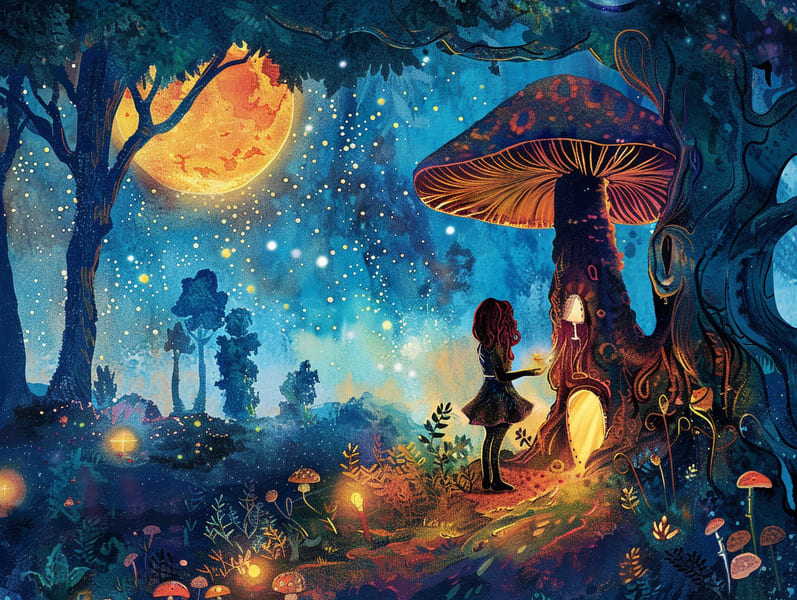Exploring the Roots of Best Fairy Tales and Its Consistent Splendor.
Exploring the Roots of Best Fairy Tales and Its Consistent Splendor.
Blog Article

Famous fairy tales have long histories. These stories have been spoken from one generation to the next long before they were ever transcribed. They came from a variety of traditions, including European traditions. They were initially disseminated among grown-ups, often carrying themes and messages related to the societal norms and beliefs of the time.
The Brothers Grimm, Jacob and Wilhelm Grimm, were among the first to assemble many of these beloved tales. Their published works, "Grimm's Fairy Tales," included stories like "The Little Glass Slipper," "Hansel and Grethel," and "Snow-White and Rose-Red," which have since become pillars in the world of iconic fairy tales. Similarly, Andersen's fanciful stories, such as "The Little Mermaid," and "The Ugly Duckling," have won hearts worldwide, ensuring their place in the pantheon of beloved fairy tales.
Despite their age, these stories remain as significant as ever, especially as nighttime stories for kids. These fantastical tales are now available in various formats, including beautifully illustrated books, enchanting animations, and internet fairy tales.
Their persistent charm can be ascribed to several delightful features:
Important Morals: Old fairy tales often teach important moral lessons. Narratives like "The Tale of the Boy Who Cried Wolf" teach the significance of integrity, while "The Tortoise and the Hare" show the traits of steadfastness and modesty. These tales offer little ones clear distinctions between good and bad, shaping their moral compass in a soft yet meaningful way.
Sympathy and Perception: Timeless fairy tales frequently involve heroes facing trials and tribulations, inspiring readers to comprehend with their struggles and boost their triumphs. For instance, "The Story of Beauty and the Beast" emphasizes the benefit of valuing inner qualities to comprehend the real person of a character, building compassion and insight.
Cultural Perception: Many timeless fairy tales are deeply ingrained in the cultural contexts from which they emerged. Learning from these tales can provide intriguing perspectives into different social structures, advancing a sense of global awareness and respect.
Creativity and Imagination: The fantastical elements in old fairy tales—talking animals—encourage children’s fantasy worlds. These fairy tales take readers to fantastical realms, boosting imaginative dreams and a sense of marvel that endures a lifetime.
Traditional fairy tales are not only bewitching but also illuminating. They function as alluring tools in fostering various cognitive and emotional skills in the young. When fairy tales are recited, they improve language skills by showing new terms and meanings and elaborate sentence structures. This practice also enhances auditory perception and focus, as young ones track the narrative, ready to see what happens next.
Furthermore, deliberating the themes and characters of timeless fairy tales can advance critical thinking and analytical skills. Little ones are shown to discover patterns, make predictions, and get cause and effect. These discussions also contribute to little ones verbalize their thoughts and feelings, nurturing their emotional intelligence.
In today’s online age, the existence of free fairy tales online has made these stories website more attainable than ever. Internet sites and applications present wide arrays of classic fairy tales that can be browsed or listened via anytime, anywhere. Fairy tales spoken are particularly favored, offering an fun way for young ones to be a part of these enchanting tales. Audio stories and voiced videos take characters and settings to life, often accompanied by captivating melodies and instrumentals that intensify the story adventure.
The lasting appeal of ancient fairy tales lies in their ability to transform to today's society while sustaining their fundamental ideas. Contemporary retellings of these fairy tales often integrate more representative protagonists and modern settings, making them familiar to today’s audience. However, the core values of spirit, sympathy, and truth remain unchanged, continuing to resonate with young readers of all ages.
Traditional fairy tales also offer a sense of protection and knownness. They extend a well-structured narrative with a transparent beginning, middle, and end, often closing with the culmination of conflicts and the triumph of morality over immorality. This assuredness can be comforting for young ones, delivering a sense of unchangeability in an unstable world.
Classic fairy tales continue to enthrall and edify new generations, maintaining their magic and meaningfulness in modern society. As children's night stories, they confer a perfect blend of charm and enlightenment, fostering moral values, empathy, and creativity. The proliferation of digital fairy tales and the well-liked nature of fairy tales read aloud affirm that these timeless tales remain available to new generations.
By upholding and circulating these narratives, we continue to venerate the rich tapestry of mythology and cultural heritage. Whether you are viewing a richly illustrated book, perusing a virtual collection, or listening on an sound book, the fascination of ancient fairy tales is always within reach. These narratives highlight of the continued impact of narratives and its ability to draw us together across centuries and lands.
Even if you are experiencing a richly illustrated book, delving into a internet collection, or listening through an voice book, the enchantment of ancient fairy tales is always within reach.
These tales teach us of the endless effect of stories and its ability to gather us across epochs and places, casting a charm that delights and instructs alike.